
The Fairfax dailies are running an article today on the $430 million blow to Australian retailers following the release of the May Federal Budget:
Nearly $480 million has been wiped off the value of Australian retailers since the May budget was delivered…
More than half a dozen retailers including Kathmandu Holdings, Pacific Brands, Super Retail Group, The Reject Shop, toy wholesaler Funtastic, footwear chain RCG Group and Noni B have downgraded earnings forecasts in the past month.
Most retailers have blamed unseasonally warm weather and a scary federal budget for consumers tightening their purse strings despite the appeal of historically low interest rates, which are supposed to make households feel better about spending…
As illustrated a few weeks back, the sharp fall in consumer sentiment following the release of the Budget is a bad omen for the retail sector, where sales growth tends to follow sentiment quite closely (see below charts).
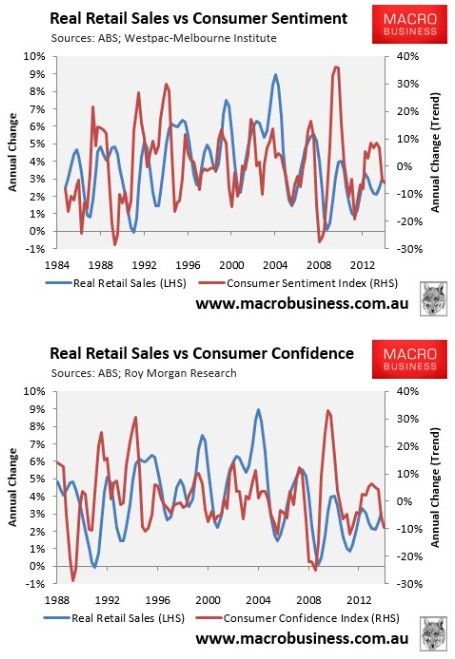
Certainly, in the absence of a sharp reversal in confidence, recent weak consumer sentiment readings are pointing to falling retail sales growth in the months ahead.
As noted previously, there are also longer-term structural headwinds that will weigh on the consumer, retail sales and broader economy.
First, there is Australia’s near record high level of household debt, which limits household’s ability to leverage up and spend like they did in the 1990s and early-to-mid 2000s (see next chart).
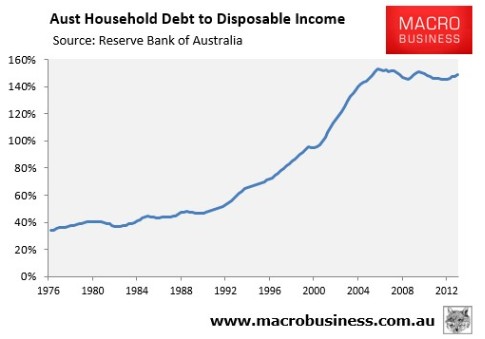
Second, there is Australia’s falling per capita income growth which, as noted by the Australian Treasury, is a trend that is likely to continue as the terms-of-trade trends lower and workforce participation declines (see next chart).
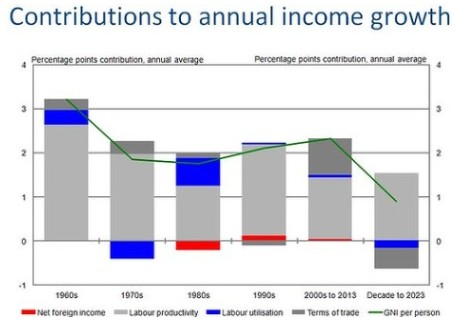
Finally, and related to the above, there is Australia’s ageing population and declining worker share, which will weigh on both income and consumption spending across the economy (see next chart).
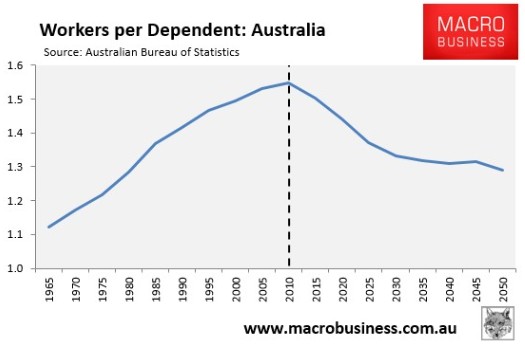
Finally, it is worth pointing out that despite the explosive growth in national income over the past decade due to the once-in-a-century commodity price and terms-of-trade booms, retail sales have still managed to grow at a faster rate than national disposable income (see next chart).
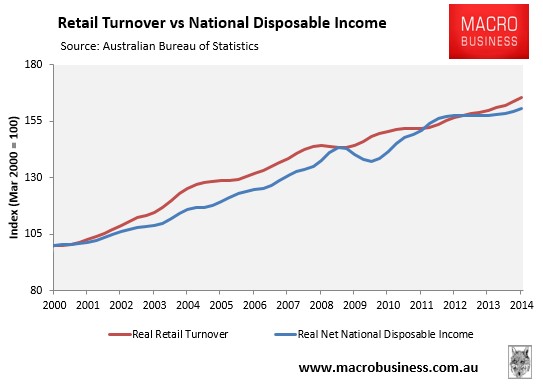
Expecting retail sales to continue growing solidly as national income growth stalls is an unrealistic proposition, and it appears from the macroeconomic data that the sector is headed for a low growth future.

